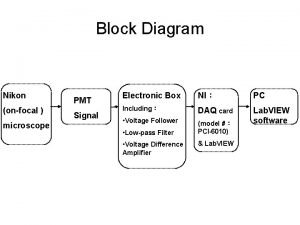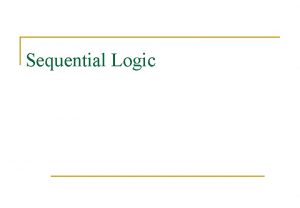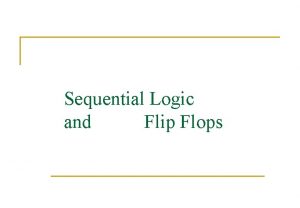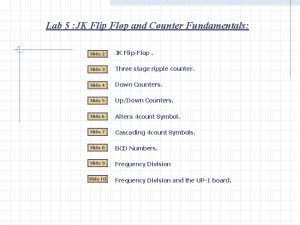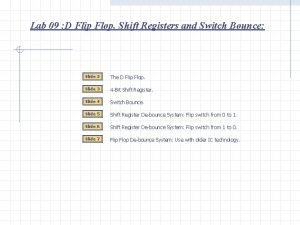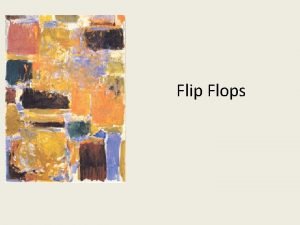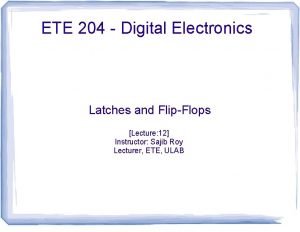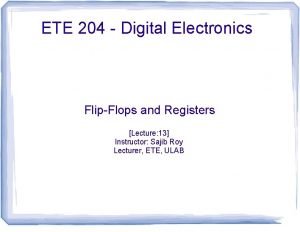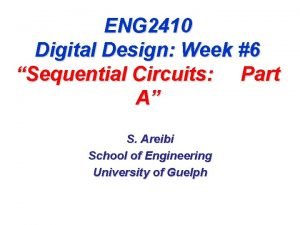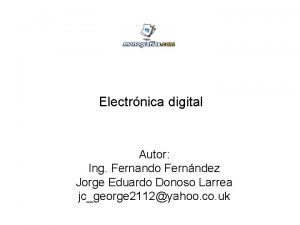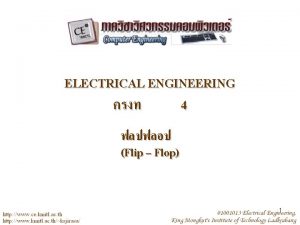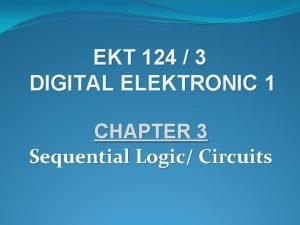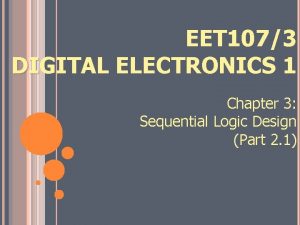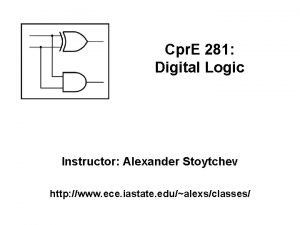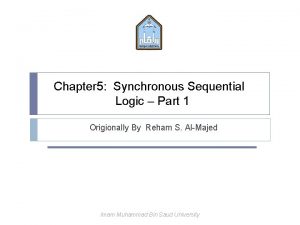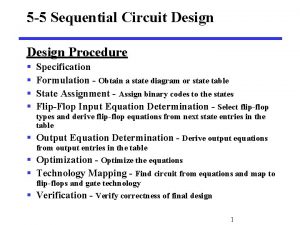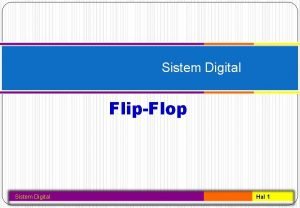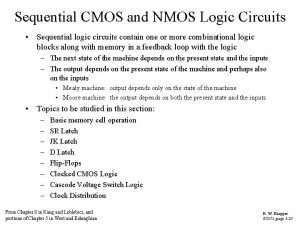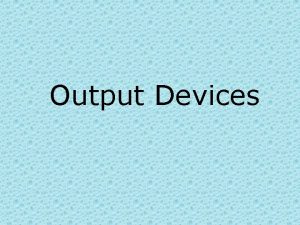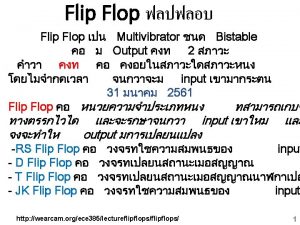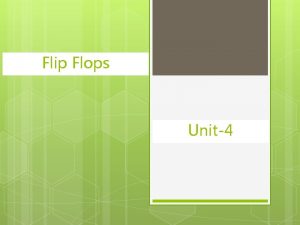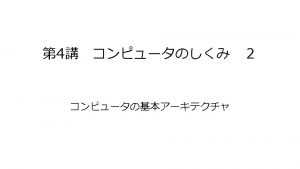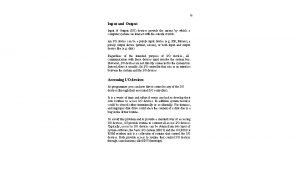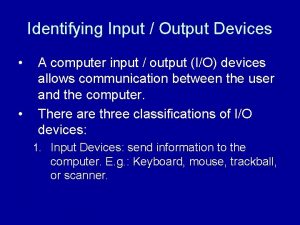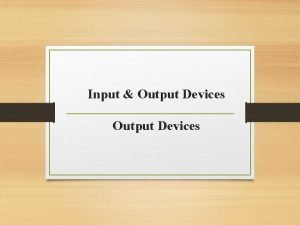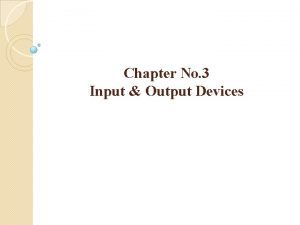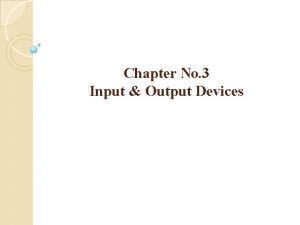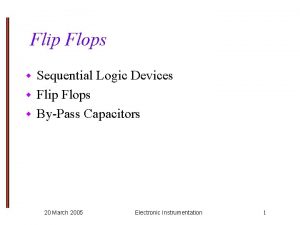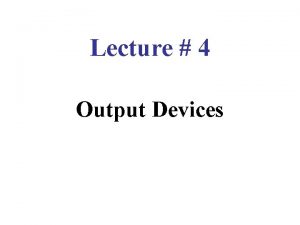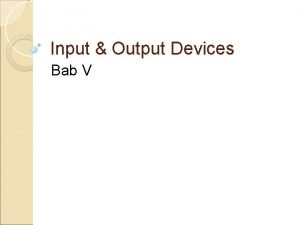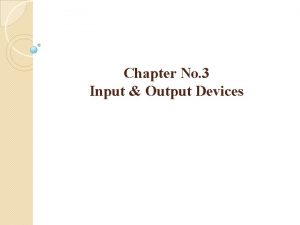Electronic memory logic devices Flip Flop Output Input

































- Slides: 33

Electronic memory & logic devices

Flip Flop Output Input 2 Flip Flop Logic gates Output’ Transistors And diodes Solid State Physics - Clock N + Input Memory devices : Flip flops P

Transistors

Abstract Transistors have six salient features. First, they rapidly switch between two states in response to an input signal. Second, a small input voltage can control a large output voltage. Third, voltage is the common I/O signal carrier. Fourth, wires are the common interconnect. Fifth, common I/O and wires enable addressable signals, which means specific connections between devices. Sixth, amplification and addressable signals enables restoration, because the output voltage greatly exceeds the voltage necessary to control a downstream transistor.

A transistor

In the schematic below, current through the load resistor determine the output (state) of the device.

Current through the load is determined by the current through the two lower terminals of the device.

The current through the two lower terminals of the device is non-linearly responsive to the input voltage.

Therefore the output voltage is non-linearly responsive to the input voltage.

Logic gates

Abstract Transistors can be assembled into devices that render Boolean logic functions. The input and output voltages represent logic 0 or 1. NAND is the universal logic gate, and underpins design of higher level memory devices like latches and flip-flops.

A NAND gate If either input is a logic 0, output is a logic 1.

Function No current travels through circuit if either transistor switch is open (logic 0 input A or B). Thus, no voltage drop across the load (4. 7 K) resistor and all voltage drop across transistors. Because output is taken across the transistors, rather than the load, and because voltage drop across transistors is high, logic 1 is output if either input A or B is a logic 0.

NAND is the universal logic gate

Latches

Abstract NAND gate latch, implemented in flip-flops, is a simple memory device that will latch onto an output state when both inputs are one. If zero is input, the latch output is 1, independent of prior state. The latch will hold state if both inputs are equal to 1.

NAND gate latch Input 1 Output ’ Input 2

Holds state if both inputs are one 1 0 1 Prior state = 0 Prior state = 1 0 1 1 S R Q 0 1 1 1

D-type flip-flops

Abstract D-flip flop implements a NAND gate latch. The flip-flop output equals the Input, if enabled. The enable can be a clock. In this case, the output tracks the input when the clock is a logic 1.

D-type flip-flop In Q, output Enable 0 or 1 Latch

Output equals input if enabled. 0 1 1 0 Latch 0 1 D E Q 0 1 0

A clock can serve as the enable. Clock

Output tracks input when clock is logic 1. In Output Clock In Clock Enable Output Latch

JK-type flip-flops

Abstract JK flip-flops also implement latches. Because of feedback, this flip-flop architecture will toggle output states when both inputs are logic 1. The enable can be a clock. In this case, the state of the flip-flop will toggle at the positive going transition of the clock, if both input are logic 1. Flip-flops have at least four salient features that admit well to implementation in systems. They perform fast computation. They have a consistent definition for logic 0 and 1. They perform the same function independent of their position (context) within a circuit. They have common interconnect and I/O signal carrier, which enable programming via specific device connections.

JK Fli-flop : Output state toggles if both inputs are logic 1. Input 1 Output Enable Latch Output ’ Input 2 J K E Q 1 0 1 1 0 0 0 1 No Change 1 1 1 Toggle

0 1 1 New output = 0 1 Latch 0 1 1 1 J K E Q 1 1 1 Toggle Prior output = 1

1 1 0 New output = 1 1 Latch 1 0 J K E Q 1 1 1 Toggle Prior output = 0

A clock can serve as the enable. Each positive going clock transition serves as a trigger. Clock

Output state toggles if both inputs are logic 1. “Trigger” “Inputs” 1 1 Bit State 0

But both flip-flop inputs must be high. “Trigger” “Inputs” Bit State

Function Output Input Clock Input 2 Flip Flop Output’ High Input 1 High Input 2 Clock Output 1 0 0 1
 Pmt
Pmt Jk flip flop
Jk flip flop Input devices
Input devices Binary multiplier asm chart
Binary multiplier asm chart Negative trigger
Negative trigger Flip flop waveform
Flip flop waveform What is flip flop
What is flip flop Logika kombinasi
Logika kombinasi Jk flip-flop lab report
Jk flip-flop lab report D flip flop shift register
D flip flop shift register Daniel kounin
Daniel kounin Circuito flip flop rs
Circuito flip flop rs Jk flip flop ic 7473
Jk flip flop ic 7473 D flip flop with enable truth table
D flip flop with enable truth table Sr latch animation
Sr latch animation Flip flop schakeling
Flip flop schakeling Gated d latch characteristic equation
Gated d latch characteristic equation Shift register d flip flop
Shift register d flip flop Dsccr
Dsccr Tabla de verdad flip flop sr
Tabla de verdad flip flop sr Edge triggered vs level triggered flip flop
Edge triggered vs level triggered flip flop Master slave jk flip flop truth table
Master slave jk flip flop truth table 3 bit up down counter using t flip flop
3 bit up down counter using t flip flop Einflankengesteuertes jk flip flop
Einflankengesteuertes jk flip flop D flip flop k map
D flip flop k map Codificador de octal a binario
Codificador de octal a binario S r q logic
S r q logic 2 bit synchronous counter
2 bit synchronous counter Jk flip flop quartus
Jk flip flop quartus Counters in digital electronics
Counters in digital electronics Jk flip flop
Jk flip flop Sr flip-flop disusun dari gerbang
Sr flip-flop disusun dari gerbang Sr latch cmos
Sr latch cmos Excitation table
Excitation table
